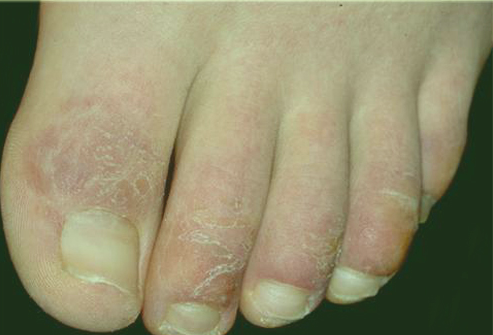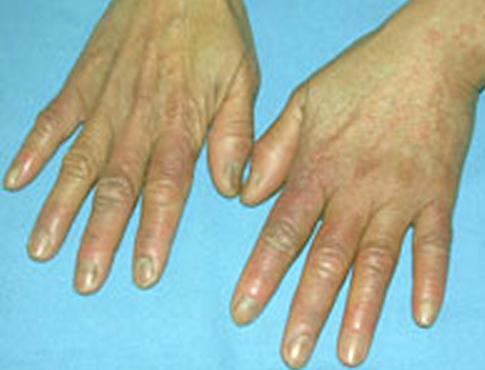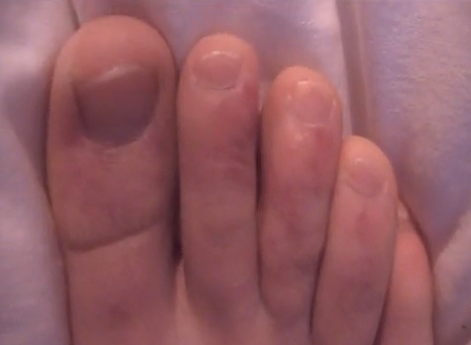Chilblains, refers to a condition that is characterized by painful inflammation of the tiny blood vessels present in the skin. The disorder arises as a reaction of the skin to sudden warming after being in cold temperatures. Chilblains can result in swelling, reddish patches, itching as well as occurrence of blisters on the extremities like the fingers, toes, nose and ears. It is also called pernio.
Chilblains can be easily treated and the abnormal skin condition clears up after 1 to 3 weeks. However, it has a tendency to seasonally recur. Lotions and other drugs are used to treat the condition. Chilblains generally do not result in the development of scars, but it is susceptible to infection, which can result in serious damage of the skin when not treated.
One can prevent the development of chilblains by following certain precautionary measures such as covering exposed skin, restricting the duration of exposure to cold and also by wearing warm clothing.
Symptoms of chilblains
Some of the signs and symptoms of chilblains include the following:
- The skin color may change from reddish to dark blue
- The affected skin areas may be painful
- Tiny, reddish and itchy patches appear on the skin, especially on the hands and the feet
- The skin may become inflamed or swollen
- There may be possible formation of blisters
- The skin may experience sensations of burning
- There may be possible development of skin ulcers
If chilblains results in blistering of the skin, then it can lead to development of complications such as possible formation of ulcers and contracting infections. The infections can be quite painful, and if left untreated, can be life threatening. It is important to consult a physician when a patient suspects that the affected skin area is infected.
Chilblains Causes
Chilblains are considered as an adverse reaction of the body after being exposed to cold. The condition generally tends to develop in those areas of the skin that have been exposed to cold and then warmed a little too rapidly. For example, chilblains may develop when cold hands are suddenly warmed by placing them in front of a fire or directly directed at the heater.
Sudden warming of the skin leads to sudden enlargement of the tiny blood vessels in the skin. This expansion is too sudden for the adjacent larger blood vessels, and it cannot alter efficient to handle such a change. This results in a bottleneck type of situation wherein all blood vessels are vying for space, therefore resulting in the leakage of blood to the surrounding tissues. The exact cause of such a reaction of the skin is not yet known.
Some of the risk factors that increase the vulnerability to developing chilblains are as follows:
- Sudden exposure of the skin to warmth after that part of the skin has been subjected to cold for a significant amount of time
- Underweight individuals, who may weigh around twenty percent less than what is required as compared to the height, are at increased risk to developing chilblains
- Women are at greater risk to developing chilblains as compared to men. The causes for this are not known.
- The area of residence is also another risk factor. Individuals living in drier and colder places are less likely to develop the condition, as the clothing and the living conditions in such places are more suitable to protection against cold. However, people living in places that have low temperatures coupled with high humidity are at greater vulnerability to developing chilblains
- Raynaud’s phenomenon patients are also at greater risk to developing chilblains in addition to the original disorder that also affects the extremities but causes different changes in skin color.
- Excessive of abnormal pressure on the skin due to wearing ill fitting shoes or uncomfortable, tight gloves can increase the susceptibility or exacerbate the existing case of chilblains
- Chilblains are more likely to form during the months between November and April
- Individuals who have a poor circulatory system have increased sensitivity to temperature changes, thereby making them more prone to developing the condition
Treatment of Chilblains
Some of the ways to treat chilblains are discussed below:
- The swelling and itching associated with chilblains can be alleviated with aid of topical corticosteroids
- In case there is blistering of the skin, then the open wound areas have to cleaned and protected against infection
- A blood pressure drug known as nifedipine works by opening up the blood vessels and hence can be occasionally used to treat chilblains
Chilblains generally tend to resolve within 1 to 3 weeks. During this time, patients can follow the measures listed below to reduce the affects of the symptoms:
- Do not expose the affected skin to heat, but keep it warm
- An antiseptic cream should be regularly used to clean the affected areas, even when there are not cuts, to prevent infection
- Dress warmly and do not indulge in scratching
- Avoid exposure to cold, by keeping the house and workplace warm and also ensure that the extremities are always kept sufficiently warm.
Chilblains Pictures




Does your blog have a contact page? I’m having problems locating it but, I’d like to shoot you an email. I’ve got some suggestions for your blog you might be interested in hearing. Either way, great site and I look forward to seeing it expand over time.
wide for me. I’m having a look ahead on your subsequent post, I’ll attempt to get the hang of it!